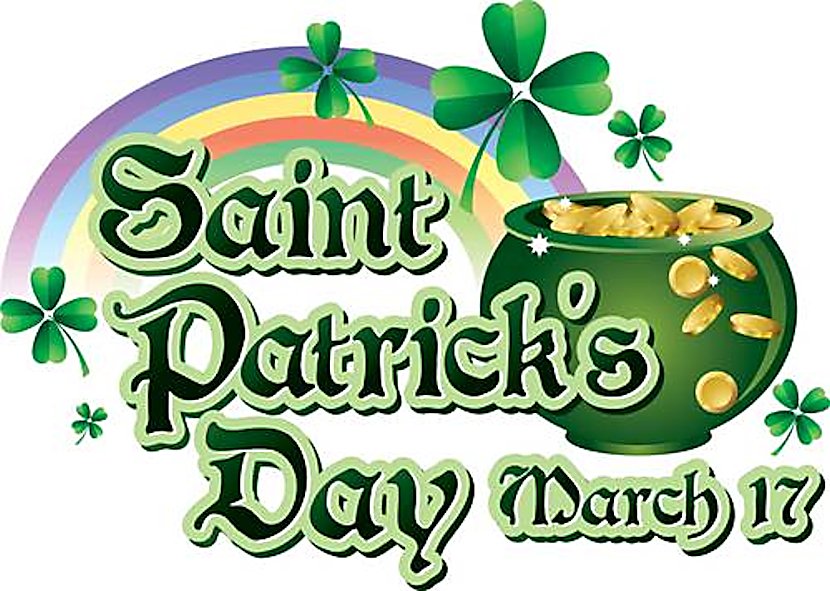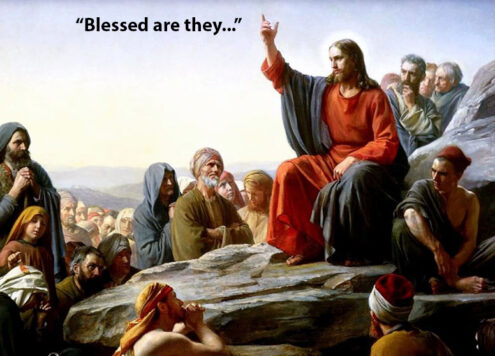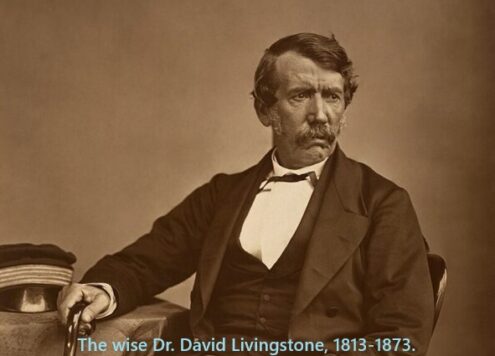“Why is the shamrock one of the national symbols of Ireland?” This is a commonly asked question. Legend has it that St. Patrick used it to describe the mystery of the Holy Trinity to the pagan Irish. Just as a three-leafed shamrock has but one stem, St. Patrick explained that there are three persons rooted in the One God. This ancient explanation of the Holy Trinity, though not profoundly theological, appealed to the imagination of the nature-loving Irish people, and it has been adopted ever since as an enduring national symbol.
St. Patrick was born in the late fourth century in, perhaps, Brittany, in Northern France. Some scholars maintain that he was born in England. He was captured by Irish pirates at the age of fifteen and was forced to work as a slave in Ireland. He later escaped to France, studied for the priesthood and returned to Ireland as an apostle to the Irish. He wrote a book which he called his Confessions and, in it, he tells his remarkable story.
St. Patrick had extraordinary success as the apostle to the Irish. In his lifetime, the entire country was converted to Christianity. What a unique achievement! A century later, his spiritual descendants brought Christianity and classic learning back to Europe when it was plunged into chaos following the fall of the Roman Empire. This period of history is known as the dark ages. Through the efforts of St. Patrick, Ireland became known as the ‘island of saints and scholars’. This remote, once-pagan land, was spared the ravages of the dark ages, and this enabled it to send missionaries and scholars back to Europe to re-christianize and re-civilize it. This remarkable phenomenon has been described brilliantly by Fahey in his book: ‘How the Irish saved western civilization.’
St. Patrick is revered for his humanity and spirituality which respected grace and nature. He was a firm believer that grace built on nature, not destroy it. Spring Water was regarded as a sacred commodity in Ireland, and public wells were treated with reverence throughout the land. St. Patrick honored this ancient, natural tradition, and he blessed the wells or christianized them so that they might be preserved in perpetuity. All over Ireland, in towns and villages, these sacred wells are to be seen as places where people visit to quench, not only their thirst, but to engage in quiet meditation. Like Christ, St. Patrick’s mission was, not to destroy but to fulfill.
St. Patrick’s Day is celebrated every March 17th, the day the saint is reputed to have died. This holiday began in Ireland. As the Irish spread out around the world, they brought the feast of St. Patrick with them wherever they went. It has come to be associated with everything Irish: fun loving, nature loving, people loving, anything green and gold, shamrocks and good luck and, of course, parades, plenty of them. It is interesting that St. Patrick is the only Saint who is celebrated worldwide by fun loving and decent people of any or no denomination. The non-threatening appeal of St. Patrick for all peoples, Christian or non-Christian, is unique among Saints in the Church’s calendar. His appeal is universal because he connects with something deeply human in all of us, our common humanity and the need to celebrate it.
The first grand marshal of the St. Patrick’s Day parade in New York was America’s first President, George Washington. Although St. Patrick’s Day is celebrated in almost every city in the United Stats, and also in the White House in Washington, D C., it is in Savannah, Georgia, that St. Patrick’s Day is observed as a civic holiday. Why? As a tribute to the many brave Irishmen who gave their lives fighting for the Confederacy and the Union during the American Civil War.
Celebrating the memory of a saint is an old Christian custom. St. Patrick’s Day, however, is different from the usual memorial of a saint. It is a religious holiday; but it is also a fun day, a day of music and dancing which is celebrated by races, creeds, and nationalities worldwide.
Happy St. Patrick’s Day!











4 Comments
Patricia Huhn
Lovely song. Information about St. Patrick familiar; always nice to refresh. Knowing you are from Ireland, I want to share family names on my father’s side. Who knows, maybe we’re cousins. My grandfather Lynch was born and raised in Bantry Bay. His mother’s maiden name was Fitzgerald. My grandmother Lynch’s maiden name was Dunne and her mother’s maiden name was Healy. They lived in Tralee.
Hugh Duffy
I come from Donegal, Pat, a long way from Tralee where your folks come from. Happy St. Patrick’s Day.
Mary Sidoti
Thank you for your wishes and also for recently visiting us at St Patrick, Kent Ohio! You are a gifted homilest and am pleased that so many can “hear” the Good News through your emails! Is there yet another birthplace of St Patrick to throw in the mix? My Morning Offering email mentioned that he was born in Scotland!
Hugh Duffy
No, Mary. Scotland is not on the list. I find it amusing that St. Patrick could have been from Britain, and brought peace and laughter to the Emerald Isle but not oppression.